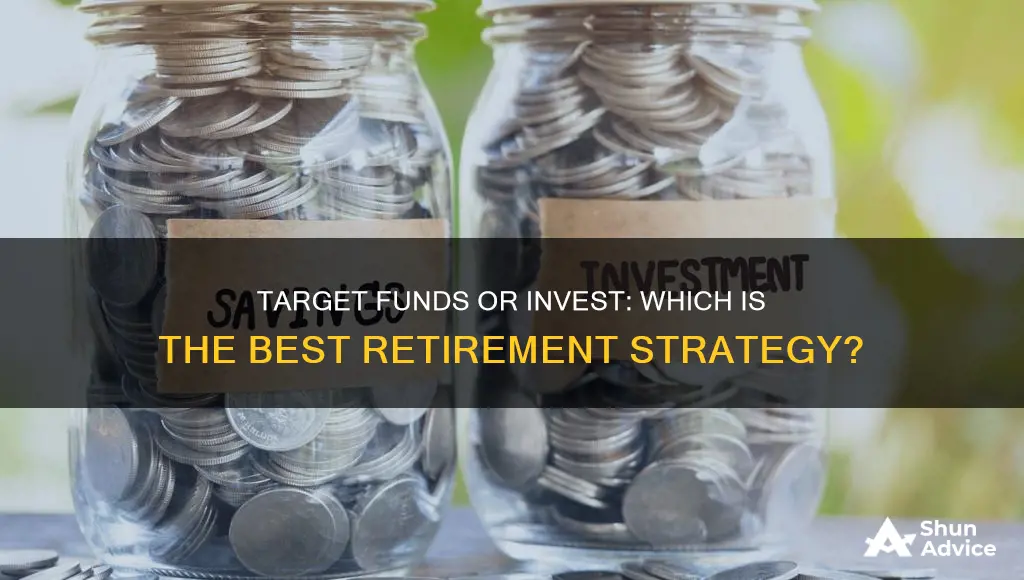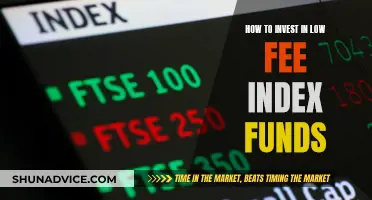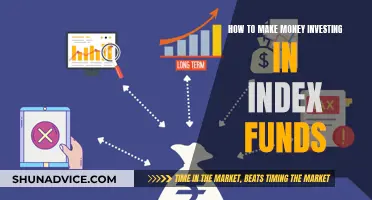
Target-date funds are a popular choice for retirement savings, offering a set it and forget it approach to investing for the future. These funds are designed to be an investor's only investment vehicle for retirement, and they work by rebalancing and reallocating assets as the investor gets closer to retirement. The main appeal of target-date funds is their simplicity, but there are also some disadvantages to consider. This article will explore the pros and cons of target-date funds and discuss whether they are the right choice for your retirement savings.
| Characteristics | Values |
|---|---|
| Purpose | Retirement savings |
| Type of fund | Mutual fund or exchange-traded fund |
| Investment strategy | Passive |
| Risk | Not risk-free |
| Management | Automatic |
| Diversification | High |
| Enrollment | Easy |
| Rebalancing | Automatic |
| Fees | Vary |
| Returns | Vary |
What You'll Learn
- Target-date funds are a set it and forget it investment option
- Target-date funds are designed to be the only investment vehicle for retirement
- Target-date funds are a default option for many employer-sponsored 401(k) plans
- Target-date funds limit investment choices and decisions
- Target-date funds are not actively managed

Target-date funds are a set it and forget it investment option
Target-date funds are a "set it and forget it" investment option. They are designed to be the only investment vehicle that an investor uses to save for retirement. The concept is simple: pick a fund, put as much as you can into the fund, then forget about it until you reach retirement age.
Target-date funds are a popular choice among investors saving for retirement. They are often a type of mutual fund, and are a default option for many employer-sponsored 401(k) plans. In 2023, 64% of retirement contributions were invested in target-date funds, up from 59% in 2022, according to Vanguard.
The target date of a fund is the year in which an investor plans to retire. The fund will then automatically rebalance and reallocate assets as this date approaches, typically shifting the majority of assets from riskier investments such as stocks to more conservative investments such as bonds and cash. This is known as a glide path.
The main advantage of target-date funds is their simplicity. They are a good option for people who are just starting out with investing, or who want to take a hands-off approach to their retirement. They also help investors avoid making reactive decisions based on market twists and turns, such as selling during a market downturn.
However, target-date funds do have some disadvantages. They may be too conservative, particularly for investors who are further away from retirement and can afford to take on more risk. They may also come with high fees, and investors may be able to achieve a similar level of diversification by owning separate index funds at a lower cost.
Investing RMD Funds Wisely: Avoiding Double Taxation
You may want to see also

Target-date funds are designed to be the only investment vehicle for retirement
Here's how they work: investors pick a fund with a target retirement year in the fund name, such as "Retirement 2045" or "Freedom 2050". The fund then automatically rebalances and reallocates assets over time, typically shifting from riskier investments like stocks to more conservative investments like bonds and cash as the target date approaches. This shift in asset allocation is known as a "glide path", and it's designed to reduce investment risk over time.
Target-date funds offer a simple, convenient, and diversified investment option for retirement savings. They are also a good choice for investors who want a hands-off approach to managing their investments. However, it's important to remember that all investments carry risks, and target-date funds are not guaranteed to perform well. Investors should also be aware of the fees associated with these funds and carefully consider their own risk tolerance and investment goals when choosing a target-date fund.
Green Funds: Where to Invest and How to Start
You may want to see also

Target-date funds are a default option for many employer-sponsored 401(k) plans
The chief appeal of target-date funds is their simplicity. They are a "set it and forget it" investment option. After participants set their contribution from their paycheck and select the funds, the asset mix in the funds automatically adjusts, slowly becoming more conservative as participants get older and closer to retirement. This is particularly useful for young investors who initially own quite a bit of equities, though the ratio shifts in favour of fixed income as they age.
Target-date funds are also a good option for those who want to take a hands-off approach to their retirement or are inclined to frequently change their fund allocation. They help keep people disciplined in their investment choices.
However, target-date funds do have some disadvantages. They limit investment choices and decisions and usually have a one-size-fits-all strategy. They may also be too conservative near the retirement date, and investors are not actively involved in investment choices.
Investments Funding Social Security: State-Sponsored Retirement Plans
You may want to see also

Target-date funds limit investment choices and decisions
Target-date funds are designed to be the only investment vehicle that an investor uses to save for retirement. They are a "set it and forget it" investment option. After setting their contribution from their paycheck and selecting the funds, the investor need not worry about the asset mix in the funds, as it automatically adjusts, slowly becoming more conservative as they get older and closer to retirement. This is known as a "glide path".
However, this also means that target-date funds limit investment choices and decisions. They usually have a one-size-fits-all strategy, and investors are not actively involved in investment choices. This may be a problem because not all funds are created equal. For example, a sample of approximate holdings with a target date of 2045 demonstrates that while each of the funds claims to be a good choice for investors seeking to retire in 2045, the contents of the funds are different.
Additionally, investors who use target-date funds need to stay on top of fees, asset allocation, and the potential risks. While target-date funds are generally designed to become more conservative as the target date approaches, investment risk exists throughout the lifespan of the fund and is difficult to foresee. For example, with interest rates rising meaningfully in 2022, some funds thought to be positioned conservatively saw large declines as the rise in rates hurt both bond and stock prices.
Therefore, it is important to monitor the fund's performance and assess whether its investments continue to meet your needs and risk tolerance over time.
Invest Wisely: Kotak Select Focus Fund Guide
You may want to see also

Target-date funds are not actively managed
The "glide path" of a target-date fund refers to how the fund's asset mix changes over time. As the investor gets older, the fund will typically shift from higher-risk, higher-reward assets such as stocks to more conservative, lower-risk investments such as bonds and cash. This shift is designed to reduce investment risk over time.
The "glide path" of a target-date fund can vary depending on whether it is a "to" fund or a "through" fund. A "to" fund will reach its most conservative asset allocation on the target date, and the allocation will not change after that. A "through" fund will continue to rebalance and become more conservative even after the target date.
While target-date funds are not actively managed, investors should still monitor the fund's performance and assess whether its investments continue to meet their needs and risk tolerance over time. Additionally, investors should be aware of the fees associated with target-date funds, as these can impact their potential earnings.
Mutual Fund Investment: Choosing the Right Funds for You
You may want to see also
Frequently asked questions
Target funds, also known as life-cycle funds or target-retirement funds, are a type of mutual fund or exchange-traded fund that helps investors save for retirement. They are designed as a "set it and forget it" investment, where investors pick the year they plan to retire, and the fund automatically rebalances and adjusts the asset allocation to reduce investment risk over time.
Target funds offer several benefits:
- Simplicity: They are easy to use and eliminate the need for investors to constantly monitor and adjust their portfolio.
- Diversification: They provide exposure to a variety of markets and asset classes, including stocks, bonds, cash, and other investments.
- Automatic rebalancing: They automatically adjust the asset mix over time, becoming more conservative as investors get closer to retirement.
- Lower fees: As target funds have become more popular, their fees have generally decreased.
There are also some drawbacks to consider:
- Fund expenses: Target funds have expense ratios, and some may carry higher fees than the underlying index funds. It's important to compare fees and keep costs as low as possible.
- Potential for conservative investments too early: Target funds may become too conservative too quickly, reducing the overall potential return.
- Lack of customization: Target funds offer a one-size-fits-all approach, and investors have limited control over the specific investments within the fund.







